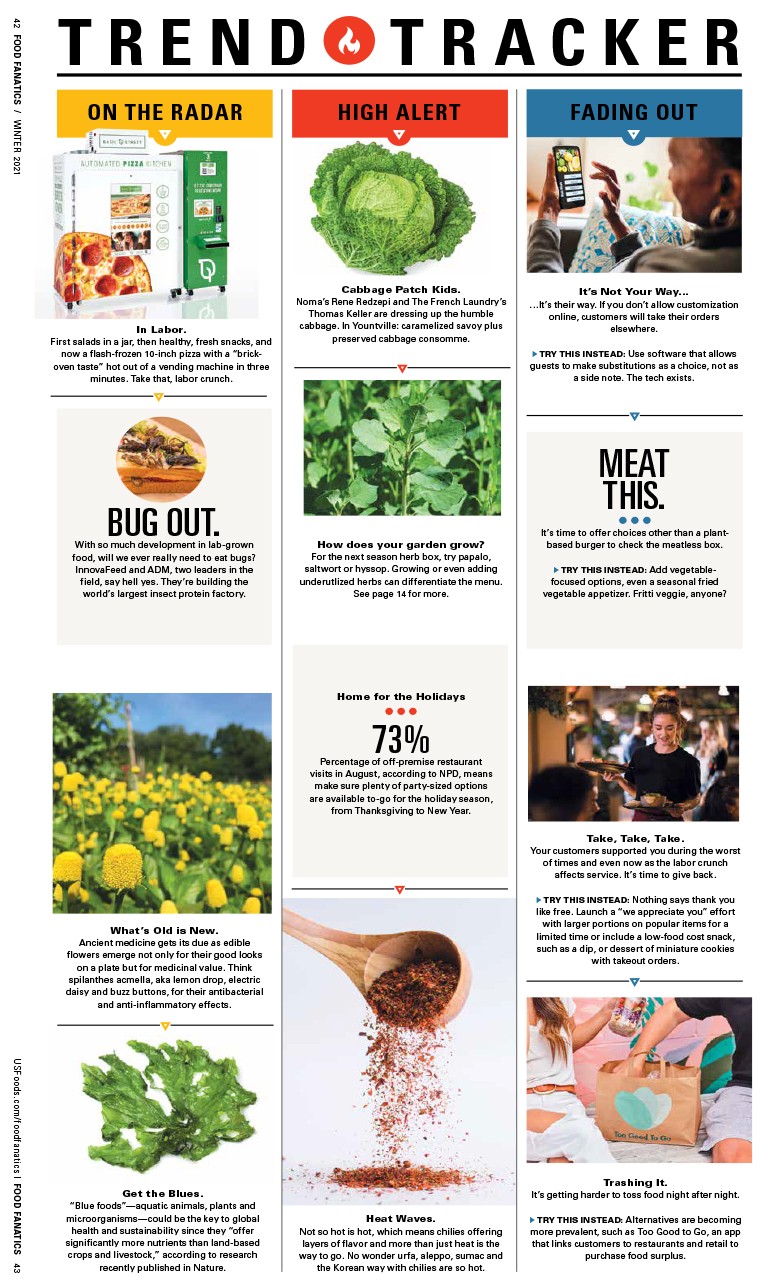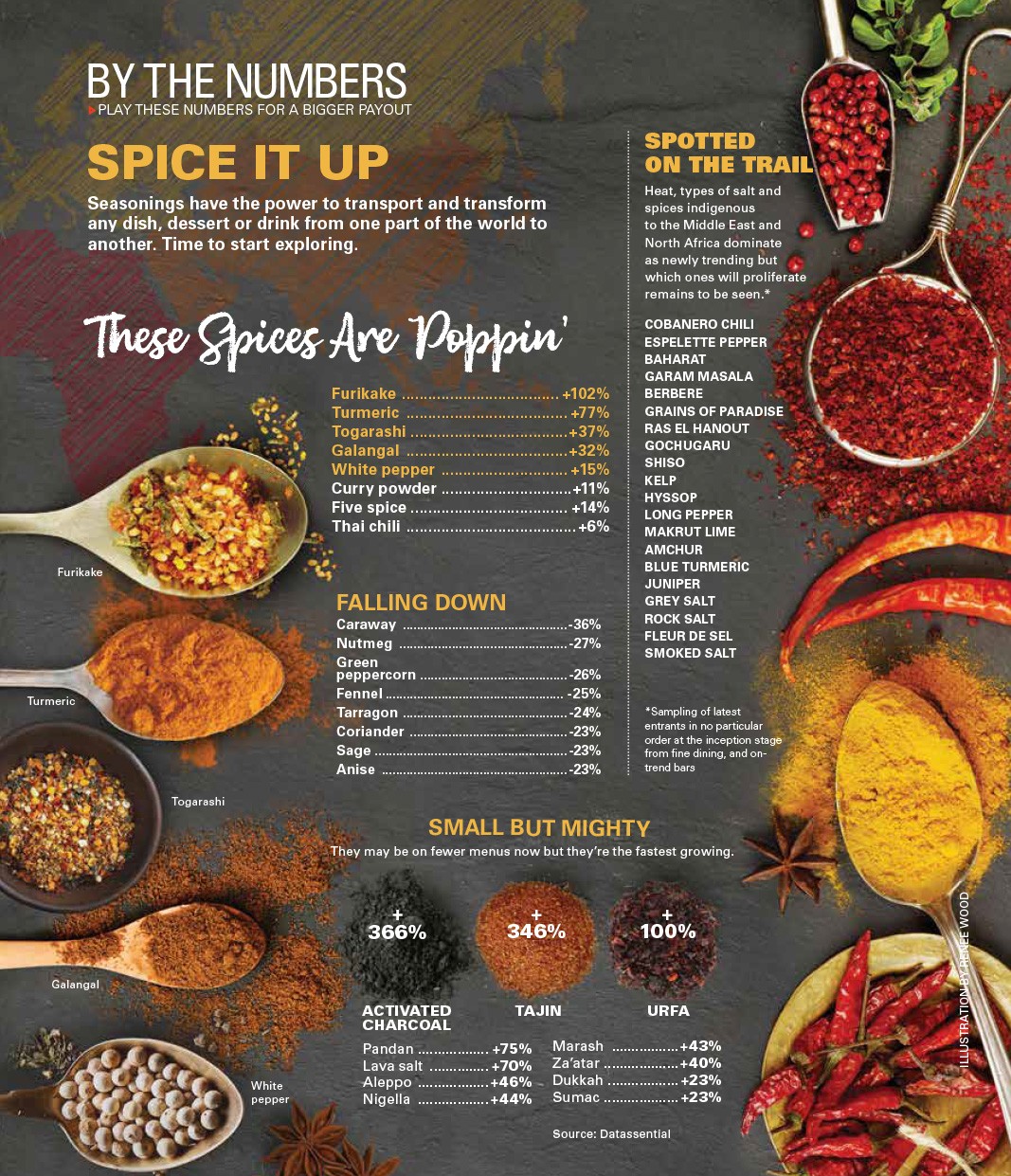Socially Aware
Does your restaurant’s social media and online presence connect with diners?
By now you should accept the fact that a social media presence online is as important as the one at your restaurant. But are you making the most of the channels connecting your brand to current and potential customers? While you think of ways to make a bigger impact in the new year, consider these tried-and-true best practices from restaurant industry influencers.
Use Facebook, Instagram and Yelp
The most important social media platforms for chefs and restaurant owners to maintain are Instagram (800 million users), Facebook (2.19 billion monthly active users) and Yelp (75 million average monthly desktop unique visitors), says Alessandra “Ale” Madrid, director of marketing for Pythian Market, a food hall in New Orleans. No matter how good your menu reads on your website, she says that “people crave things after they see them.” Madrid recommends posting at least once a day on both Instagram and Facebook, (On Instagram post relevant hashtags; produce two to three Instagram “stories” daily, tagging your business location to expand your social media reach.) She likes Facebook because it’s visual and allows for reviews, while Yelp ensures your restaurant’s information is accurate and up to date. And if you have a blog, all social media accounts should drive followers there.
Be Authentic on Social Media
Pastry Chef Scott Green, formerly of Travelle Kitchen + Bar in Chicago, has amassed 30,000 followers on Instagram (@chef_scottgreen) in part because he posts images of desserts he actually serves, not super shiny and overtly glossy dishes created just for the camera. “This is not (just) a visual craft,” he says. “Food is meant to be eaten.”
Use a Scheduling Tool
“We love Later,” says marketing director Natasha Miller, who runs the social media accounts for The Meatball Shop in New York City, which has 59,900 followers on Instagram (@meatballers). “You can schedule Twitter, Facebook and Instagram at once, which is a big help.” In addition, chefs and owners developing their brand should post about life outside their restaurants. Miller encourages founders to post about openings, events and personal campaigns, while chefs can focus on what they’re eating and cooking, as well as their travels. “Chefs are experts and their audience wants to learn from and be inspired by them,” she says.
Always Have a Strategy
Visually, images should be consistent and complimentary. Miller suggests reviewing two weeks of Instagram posts to ensure images tell a story and reflect a restaurant’s identity. “At The Meatball Shop, humor is a key part of our brand, so we like to have fun, hence all the ball jokes,” Miller says, “but we also want our guests to learn about the high-quality ingredients we use and the integrity behind our cooking.” Also consider creating curated hashtags across accounts, says Bullfrog + Baum Digital Director Arthur Bovino. “Repeating words and slogans is just good marketing, no matter the decade.”
Train Your Wait Staff to be Social Media Savvy
Knowing whether your social media efforts are paying off can be tricky, but Bovino argues that tracking engagement with key influencers is a good barometer. “Analytics can also be a well-trained wait staff,” he says. “Do people come in asking for things you’re posting on social media? Are you turning dissatisfied customers into repeat visitors or, at least, making sure they don’t turn into permanent negative brand ambassadors?”
Be Engaging
Post specials and hashtag the names and dishes you post, but don’t use social media for blatant marketing pitches, which can get you unfollowed. Try responding to good and bad reviews alike (be generous and solicitous with the latter, asking people for another shot), try the poll feature on Instagram by asking lighthearted questions, like “Life’s short. Eat this dessert first? Yes or no.” And don’t be boring. “Don’t be afraid to ‘go live,’ but don’t abuse it either,” says Executive Chef Piyarat Potha Arreeratn (aka: Chef Bee) who has 33,000 followers on Instagram (@beenaiya). “No one cares that the post office line is extra-long today.”
Only Post Quality Photos
The new iPhone® profile photo feature makes food pop, while blurring the background, so there’s no excuse for posting shoddy images. “Don’t post dark or blurry photos,” says Miller. “It doesn’t matter how much you love the dish, no one wants to look at that.” Natural lighting usually works best with iPhone photography, but if you can afford a professional photographer, or even a digital SLR camera and one umbrella light, do it.



